Unmanned Aircraft Vehicle Pilot Identification Using ML Techniques
VerifiedAdded on 2023/01/19
|184
|30717
|50
Thesis and Dissertation
AI Summary
This thesis explores the use of machine learning for unmanned aircraft vehicle (UAV) pilot identification to enhance drone security and prevent unauthorized access. The research leverages biometric data derived from radio controlled (RC) signals and on-board IMU sensors to create a pilot identification model. The study encompasses an introduction to UAVs, their applications, and the associated security challenges. It delves into the working mechanisms of UAVs, security and safety aspects, including cyber security approaches, thumbprint and biometric security devices, and machine learning techniques. The methodology includes data analysis using various classifiers, with a focus on Random Forest. The thesis covers the classification of UAVs, architecture, cyber protection, and the application of supervised and unsupervised learning techniques. The research evaluates different datasets, analyzes results, and provides a critical analysis of the findings, aiming to improve the accuracy and security of UAV pilot identification. The conclusion summarizes the key findings and contributions of the research.
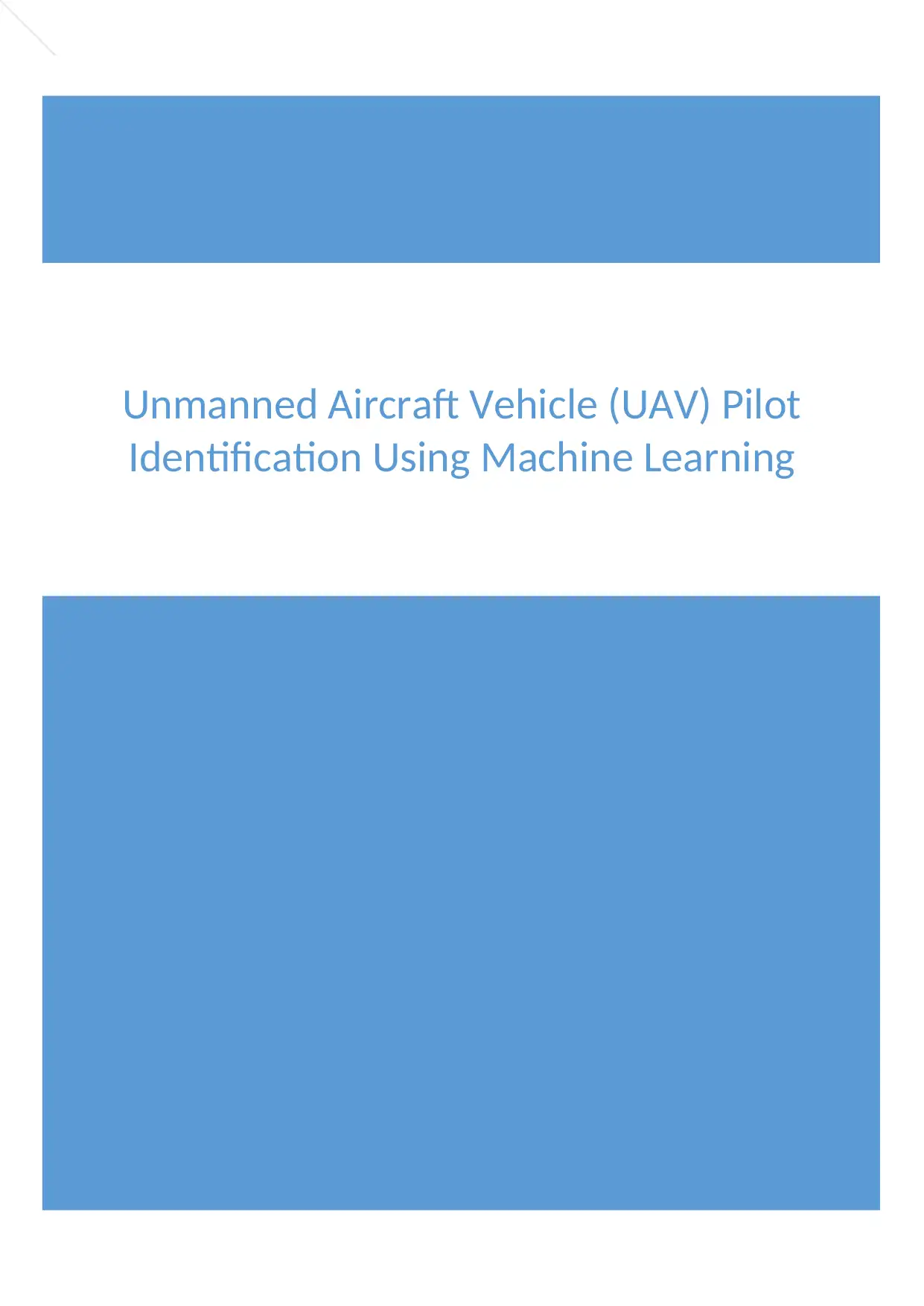
Unmanned Aircraft Vehicle (UAV) Pilot
Identification Using Machine Learning
Identification Using Machine Learning
Paraphrase This Document
Need a fresh take? Get an instant paraphrase of this document with our AI Paraphraser
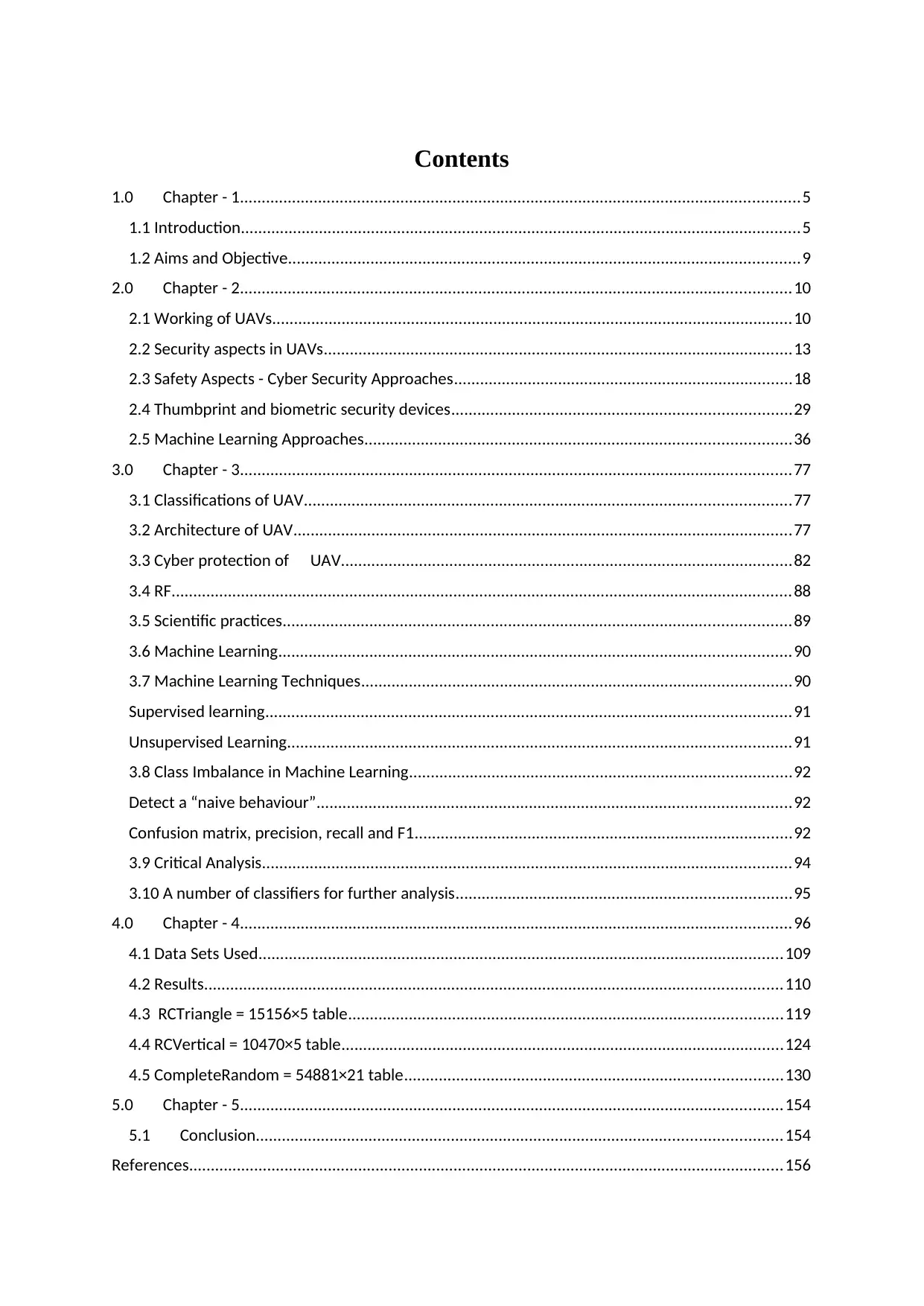
Contents
1.0 Chapter - 1.................................................................................................................................5
1.1 Introduction.................................................................................................................................5
1.2 Aims and Objective......................................................................................................................9
2.0 Chapter - 2...............................................................................................................................10
2.1 Working of UAVs........................................................................................................................10
2.2 Security aspects in UAVs............................................................................................................13
2.3 Safety Aspects - Cyber Security Approaches..............................................................................18
2.4 Thumbprint and biometric security devices..............................................................................29
2.5 Machine Learning Approaches..................................................................................................36
3.0 Chapter - 3...............................................................................................................................77
3.1 Classifications of UAV................................................................................................................77
3.2 Architecture of UAV...................................................................................................................77
3.3 Cyber protection of UAV........................................................................................................82
3.4 RF...............................................................................................................................................88
3.5 Scientific practices.....................................................................................................................89
3.6 Machine Learning......................................................................................................................90
3.7 Machine Learning Techniques...................................................................................................90
Supervised learning.........................................................................................................................91
Unsupervised Learning....................................................................................................................91
3.8 Class Imbalance in Machine Learning........................................................................................92
Detect a “naive behaviour”.............................................................................................................92
Confusion matrix, precision, recall and F1.......................................................................................92
3.9 Critical Analysis..........................................................................................................................94
3.10 A number of classifiers for further analysis.............................................................................95
4.0 Chapter - 4...............................................................................................................................96
4.1 Data Sets Used.........................................................................................................................109
4.2 Results.....................................................................................................................................110
4.3 RCTriangle = 15156×5 table....................................................................................................119
4.4 RCVertical = 10470×5 table......................................................................................................124
4.5 CompleteRandom = 54881×21 table.......................................................................................130
5.0 Chapter - 5.............................................................................................................................154
5.1 Conclusion.........................................................................................................................154
References.........................................................................................................................................156
1.0 Chapter - 1.................................................................................................................................5
1.1 Introduction.................................................................................................................................5
1.2 Aims and Objective......................................................................................................................9
2.0 Chapter - 2...............................................................................................................................10
2.1 Working of UAVs........................................................................................................................10
2.2 Security aspects in UAVs............................................................................................................13
2.3 Safety Aspects - Cyber Security Approaches..............................................................................18
2.4 Thumbprint and biometric security devices..............................................................................29
2.5 Machine Learning Approaches..................................................................................................36
3.0 Chapter - 3...............................................................................................................................77
3.1 Classifications of UAV................................................................................................................77
3.2 Architecture of UAV...................................................................................................................77
3.3 Cyber protection of UAV........................................................................................................82
3.4 RF...............................................................................................................................................88
3.5 Scientific practices.....................................................................................................................89
3.6 Machine Learning......................................................................................................................90
3.7 Machine Learning Techniques...................................................................................................90
Supervised learning.........................................................................................................................91
Unsupervised Learning....................................................................................................................91
3.8 Class Imbalance in Machine Learning........................................................................................92
Detect a “naive behaviour”.............................................................................................................92
Confusion matrix, precision, recall and F1.......................................................................................92
3.9 Critical Analysis..........................................................................................................................94
3.10 A number of classifiers for further analysis.............................................................................95
4.0 Chapter - 4...............................................................................................................................96
4.1 Data Sets Used.........................................................................................................................109
4.2 Results.....................................................................................................................................110
4.3 RCTriangle = 15156×5 table....................................................................................................119
4.4 RCVertical = 10470×5 table......................................................................................................124
4.5 CompleteRandom = 54881×21 table.......................................................................................130
5.0 Chapter - 5.............................................................................................................................154
5.1 Conclusion.........................................................................................................................154
References.........................................................................................................................................156
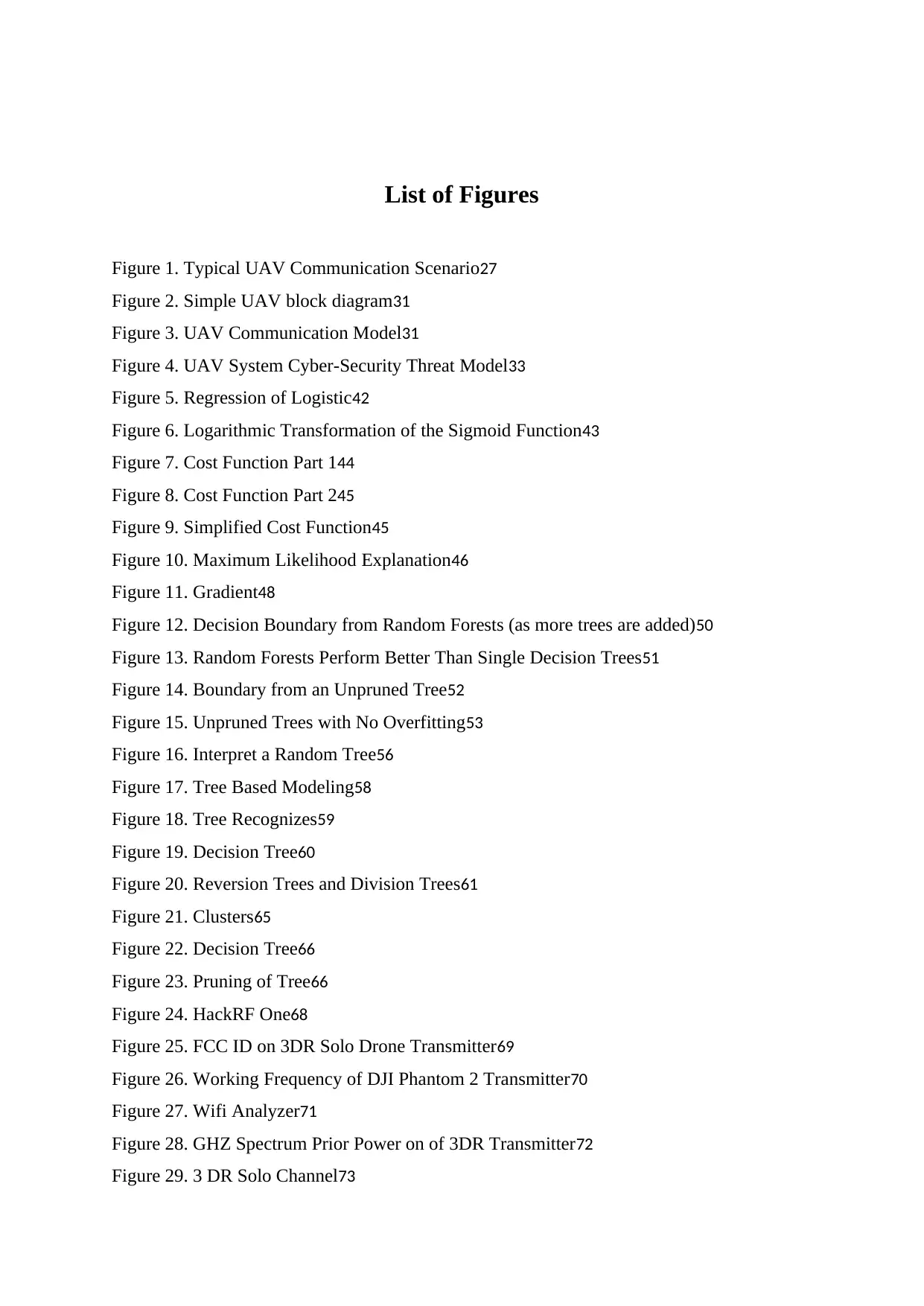
List of Figures
Figure 1. Typical UAV Communication Scenario27
Figure 2. Simple UAV block diagram31
Figure 3. UAV Communication Model31
Figure 4. UAV System Cyber-Security Threat Model33
Figure 5. Regression of Logistic42
Figure 6. Logarithmic Transformation of the Sigmoid Function43
Figure 7. Cost Function Part 144
Figure 8. Cost Function Part 245
Figure 9. Simplified Cost Function45
Figure 10. Maximum Likelihood Explanation46
Figure 11. Gradient48
Figure 12. Decision Boundary from Random Forests (as more trees are added)50
Figure 13. Random Forests Perform Better Than Single Decision Trees51
Figure 14. Boundary from an Unpruned Tree52
Figure 15. Unpruned Trees with No Overfitting53
Figure 16. Interpret a Random Tree56
Figure 17. Tree Based Modeling58
Figure 18. Tree Recognizes59
Figure 19. Decision Tree60
Figure 20. Reversion Trees and Division Trees61
Figure 21. Clusters65
Figure 22. Decision Tree66
Figure 23. Pruning of Tree66
Figure 24. HackRF One68
Figure 25. FCC ID on 3DR Solo Drone Transmitter69
Figure 26. Working Frequency of DJI Phantom 2 Transmitter70
Figure 27. Wifi Analyzer71
Figure 28. GHZ Spectrum Prior Power on of 3DR Transmitter72
Figure 29. 3 DR Solo Channel73
Figure 1. Typical UAV Communication Scenario27
Figure 2. Simple UAV block diagram31
Figure 3. UAV Communication Model31
Figure 4. UAV System Cyber-Security Threat Model33
Figure 5. Regression of Logistic42
Figure 6. Logarithmic Transformation of the Sigmoid Function43
Figure 7. Cost Function Part 144
Figure 8. Cost Function Part 245
Figure 9. Simplified Cost Function45
Figure 10. Maximum Likelihood Explanation46
Figure 11. Gradient48
Figure 12. Decision Boundary from Random Forests (as more trees are added)50
Figure 13. Random Forests Perform Better Than Single Decision Trees51
Figure 14. Boundary from an Unpruned Tree52
Figure 15. Unpruned Trees with No Overfitting53
Figure 16. Interpret a Random Tree56
Figure 17. Tree Based Modeling58
Figure 18. Tree Recognizes59
Figure 19. Decision Tree60
Figure 20. Reversion Trees and Division Trees61
Figure 21. Clusters65
Figure 22. Decision Tree66
Figure 23. Pruning of Tree66
Figure 24. HackRF One68
Figure 25. FCC ID on 3DR Solo Drone Transmitter69
Figure 26. Working Frequency of DJI Phantom 2 Transmitter70
Figure 27. Wifi Analyzer71
Figure 28. GHZ Spectrum Prior Power on of 3DR Transmitter72
Figure 29. 3 DR Solo Channel73
⊘ This is a preview!⊘
Do you want full access?
Subscribe today to unlock all pages.

Trusted by 1+ million students worldwide
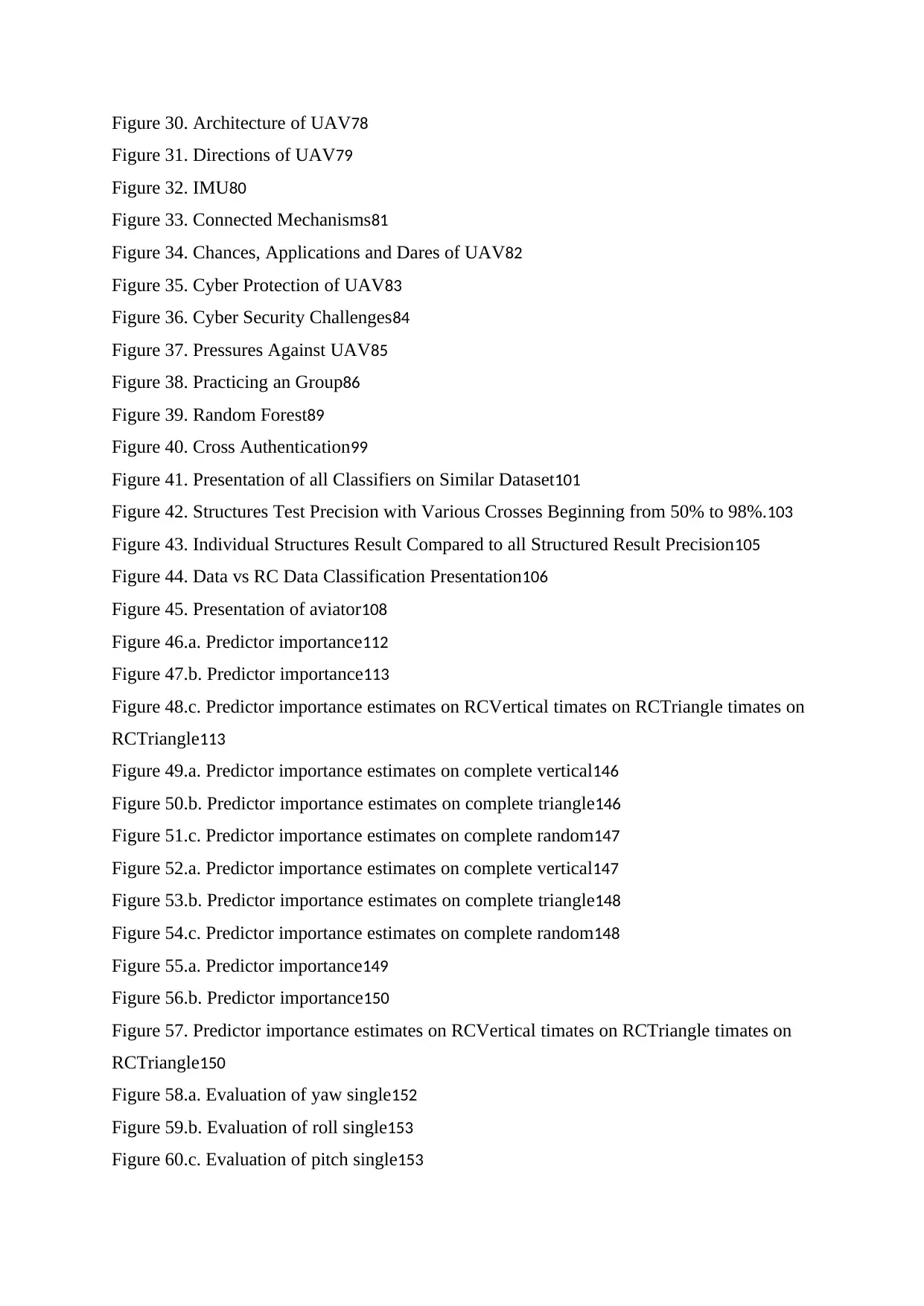
Figure 30. Architecture of UAV78
Figure 31. Directions of UAV79
Figure 32. IMU80
Figure 33. Connected Mechanisms81
Figure 34. Chances, Applications and Dares of UAV82
Figure 35. Cyber Protection of UAV83
Figure 36. Cyber Security Challenges84
Figure 37. Pressures Against UAV85
Figure 38. Practicing an Group86
Figure 39. Random Forest89
Figure 40. Cross Authentication99
Figure 41. Presentation of all Classifiers on Similar Dataset101
Figure 42. Structures Test Precision with Various Crosses Beginning from 50% to 98%.103
Figure 43. Individual Structures Result Compared to all Structured Result Precision105
Figure 44. Data vs RC Data Classification Presentation106
Figure 45. Presentation of aviator108
Figure 46.a. Predictor importance112
Figure 47.b. Predictor importance113
Figure 48.c. Predictor importance estimates on RCVertical timates on RCTriangle timates on
RCTriangle113
Figure 49.a. Predictor importance estimates on complete vertical146
Figure 50.b. Predictor importance estimates on complete triangle146
Figure 51.c. Predictor importance estimates on complete random147
Figure 52.a. Predictor importance estimates on complete vertical147
Figure 53.b. Predictor importance estimates on complete triangle148
Figure 54.c. Predictor importance estimates on complete random148
Figure 55.a. Predictor importance149
Figure 56.b. Predictor importance150
Figure 57. Predictor importance estimates on RCVertical timates on RCTriangle timates on
RCTriangle150
Figure 58.a. Evaluation of yaw single152
Figure 59.b. Evaluation of roll single153
Figure 60.c. Evaluation of pitch single153
Figure 31. Directions of UAV79
Figure 32. IMU80
Figure 33. Connected Mechanisms81
Figure 34. Chances, Applications and Dares of UAV82
Figure 35. Cyber Protection of UAV83
Figure 36. Cyber Security Challenges84
Figure 37. Pressures Against UAV85
Figure 38. Practicing an Group86
Figure 39. Random Forest89
Figure 40. Cross Authentication99
Figure 41. Presentation of all Classifiers on Similar Dataset101
Figure 42. Structures Test Precision with Various Crosses Beginning from 50% to 98%.103
Figure 43. Individual Structures Result Compared to all Structured Result Precision105
Figure 44. Data vs RC Data Classification Presentation106
Figure 45. Presentation of aviator108
Figure 46.a. Predictor importance112
Figure 47.b. Predictor importance113
Figure 48.c. Predictor importance estimates on RCVertical timates on RCTriangle timates on
RCTriangle113
Figure 49.a. Predictor importance estimates on complete vertical146
Figure 50.b. Predictor importance estimates on complete triangle146
Figure 51.c. Predictor importance estimates on complete random147
Figure 52.a. Predictor importance estimates on complete vertical147
Figure 53.b. Predictor importance estimates on complete triangle148
Figure 54.c. Predictor importance estimates on complete random148
Figure 55.a. Predictor importance149
Figure 56.b. Predictor importance150
Figure 57. Predictor importance estimates on RCVertical timates on RCTriangle timates on
RCTriangle150
Figure 58.a. Evaluation of yaw single152
Figure 59.b. Evaluation of roll single153
Figure 60.c. Evaluation of pitch single153
Paraphrase This Document
Need a fresh take? Get an instant paraphrase of this document with our AI Paraphraser
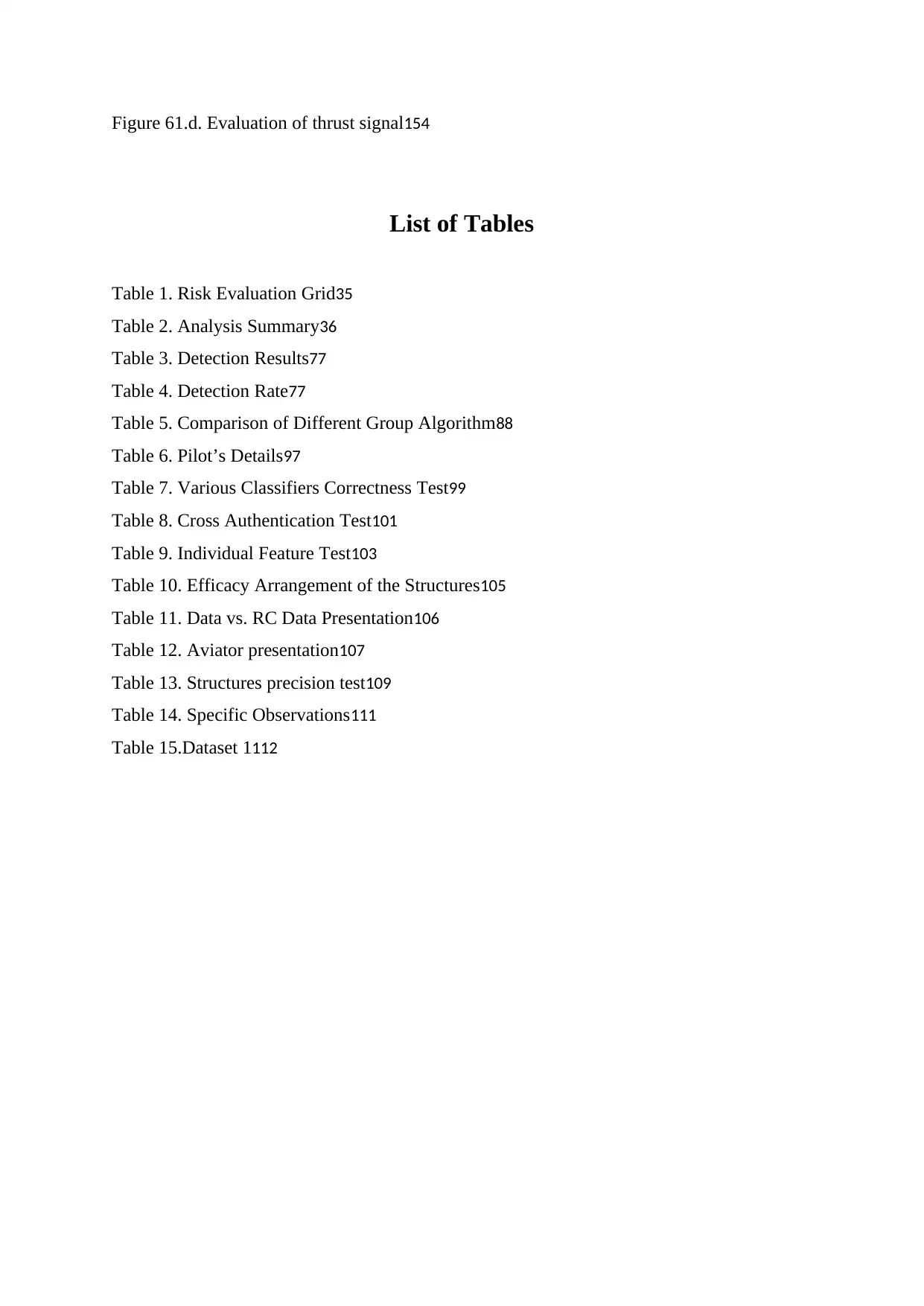
Figure 61.d. Evaluation of thrust signal154
List of Tables
Table 1. Risk Evaluation Grid35
Table 2. Analysis Summary36
Table 3. Detection Results77
Table 4. Detection Rate77
Table 5. Comparison of Different Group Algorithm88
Table 6. Pilot’s Details97
Table 7. Various Classifiers Correctness Test99
Table 8. Cross Authentication Test101
Table 9. Individual Feature Test103
Table 10. Efficacy Arrangement of the Structures105
Table 11. Data vs. RC Data Presentation106
Table 12. Aviator presentation107
Table 13. Structures precision test109
Table 14. Specific Observations111
Table 15.Dataset 1112
List of Tables
Table 1. Risk Evaluation Grid35
Table 2. Analysis Summary36
Table 3. Detection Results77
Table 4. Detection Rate77
Table 5. Comparison of Different Group Algorithm88
Table 6. Pilot’s Details97
Table 7. Various Classifiers Correctness Test99
Table 8. Cross Authentication Test101
Table 9. Individual Feature Test103
Table 10. Efficacy Arrangement of the Structures105
Table 11. Data vs. RC Data Presentation106
Table 12. Aviator presentation107
Table 13. Structures precision test109
Table 14. Specific Observations111
Table 15.Dataset 1112
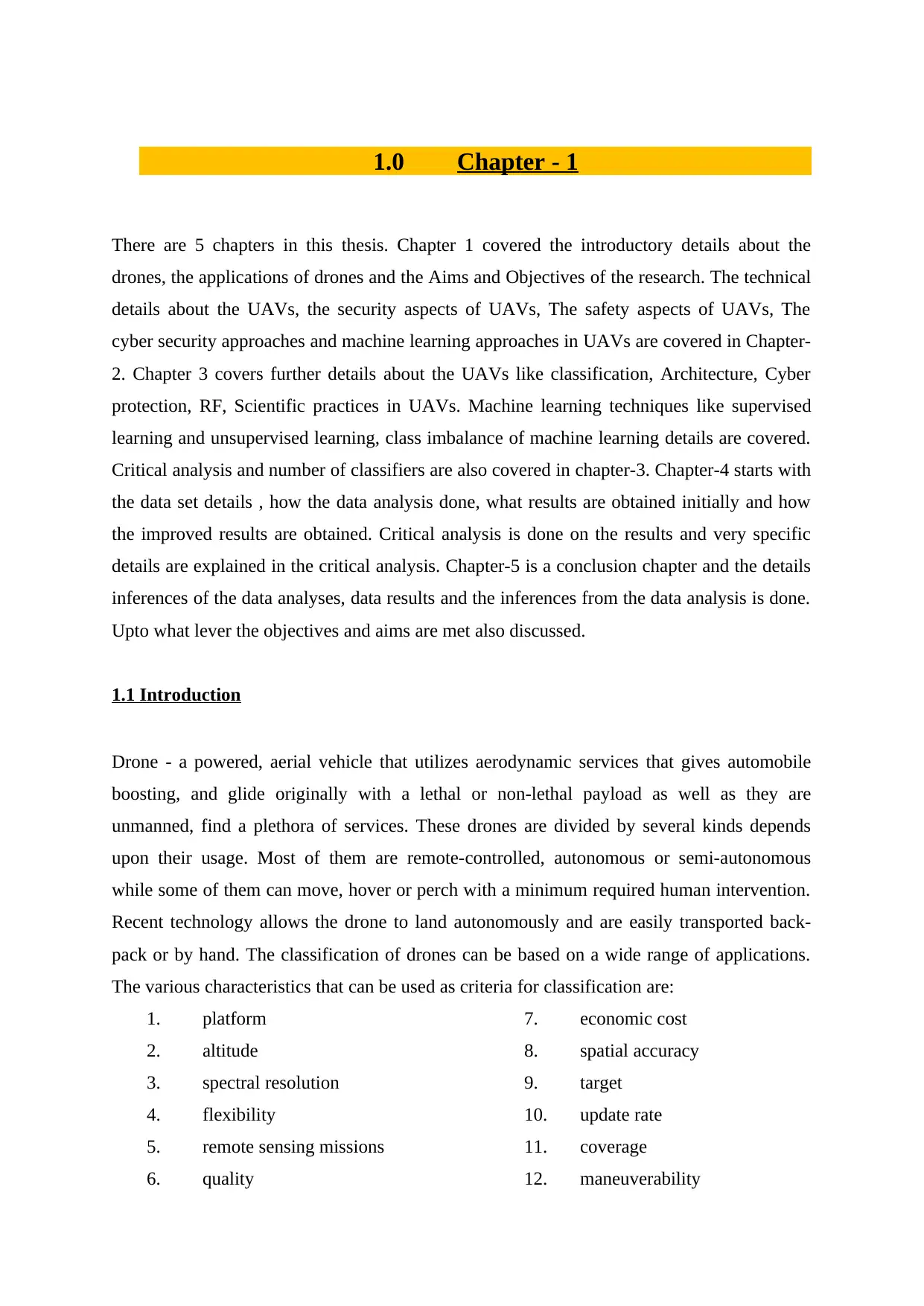
1.0 Chapter - 1
There are 5 chapters in this thesis. Chapter 1 covered the introductory details about the
drones, the applications of drones and the Aims and Objectives of the research. The technical
details about the UAVs, the security aspects of UAVs, The safety aspects of UAVs, The
cyber security approaches and machine learning approaches in UAVs are covered in Chapter-
2. Chapter 3 covers further details about the UAVs like classification, Architecture, Cyber
protection, RF, Scientific practices in UAVs. Machine learning techniques like supervised
learning and unsupervised learning, class imbalance of machine learning details are covered.
Critical analysis and number of classifiers are also covered in chapter-3. Chapter-4 starts with
the data set details , how the data analysis done, what results are obtained initially and how
the improved results are obtained. Critical analysis is done on the results and very specific
details are explained in the critical analysis. Chapter-5 is a conclusion chapter and the details
inferences of the data analyses, data results and the inferences from the data analysis is done.
Upto what lever the objectives and aims are met also discussed.
1.1 Introduction
Drone - a powered, aerial vehicle that utilizes aerodynamic services that gives automobile
boosting, and glide originally with a lethal or non-lethal payload as well as they are
unmanned, find a plethora of services. These drones are divided by several kinds depends
upon their usage. Most of them are remote-controlled, autonomous or semi-autonomous
while some of them can move, hover or perch with a minimum required human intervention.
Recent technology allows the drone to land autonomously and are easily transported back-
pack or by hand. The classification of drones can be based on a wide range of applications.
The various characteristics that can be used as criteria for classification are:
1. platform
2. altitude
3. spectral resolution
4. flexibility
5. remote sensing missions
6. quality
7. economic cost
8. spatial accuracy
9. target
10. update rate
11. coverage
12. maneuverability
There are 5 chapters in this thesis. Chapter 1 covered the introductory details about the
drones, the applications of drones and the Aims and Objectives of the research. The technical
details about the UAVs, the security aspects of UAVs, The safety aspects of UAVs, The
cyber security approaches and machine learning approaches in UAVs are covered in Chapter-
2. Chapter 3 covers further details about the UAVs like classification, Architecture, Cyber
protection, RF, Scientific practices in UAVs. Machine learning techniques like supervised
learning and unsupervised learning, class imbalance of machine learning details are covered.
Critical analysis and number of classifiers are also covered in chapter-3. Chapter-4 starts with
the data set details , how the data analysis done, what results are obtained initially and how
the improved results are obtained. Critical analysis is done on the results and very specific
details are explained in the critical analysis. Chapter-5 is a conclusion chapter and the details
inferences of the data analyses, data results and the inferences from the data analysis is done.
Upto what lever the objectives and aims are met also discussed.
1.1 Introduction
Drone - a powered, aerial vehicle that utilizes aerodynamic services that gives automobile
boosting, and glide originally with a lethal or non-lethal payload as well as they are
unmanned, find a plethora of services. These drones are divided by several kinds depends
upon their usage. Most of them are remote-controlled, autonomous or semi-autonomous
while some of them can move, hover or perch with a minimum required human intervention.
Recent technology allows the drone to land autonomously and are easily transported back-
pack or by hand. The classification of drones can be based on a wide range of applications.
The various characteristics that can be used as criteria for classification are:
1. platform
2. altitude
3. spectral resolution
4. flexibility
5. remote sensing missions
6. quality
7. economic cost
8. spatial accuracy
9. target
10. update rate
11. coverage
12. maneuverability
⊘ This is a preview!⊘
Do you want full access?
Subscribe today to unlock all pages.

Trusted by 1+ million students worldwide
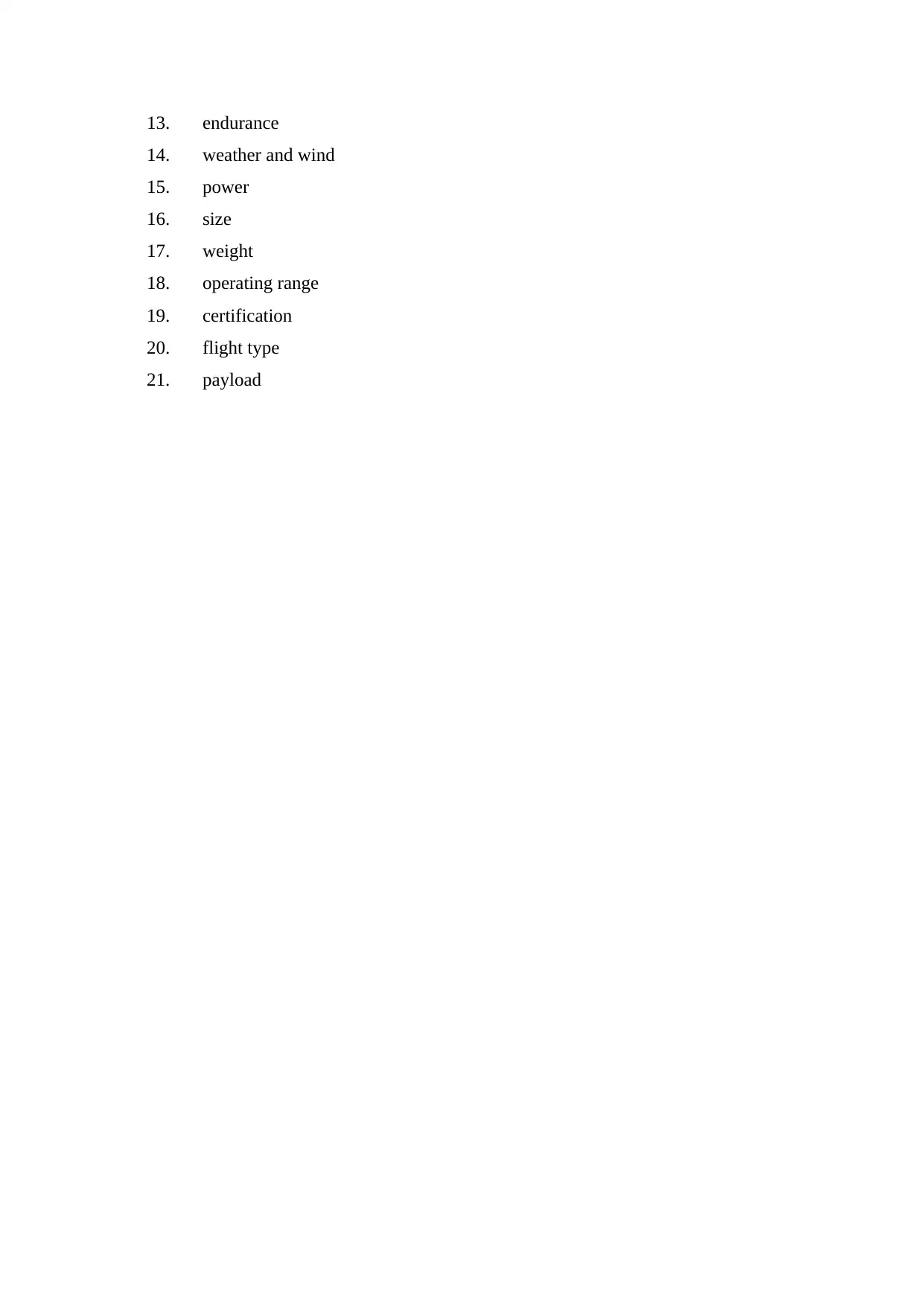
13. endurance
14. weather and wind
15. power
16. size
17. weight
18. operating range
19. certification
20. flight type
21. payload
14. weather and wind
15. power
16. size
17. weight
18. operating range
19. certification
20. flight type
21. payload
Paraphrase This Document
Need a fresh take? Get an instant paraphrase of this document with our AI Paraphraser
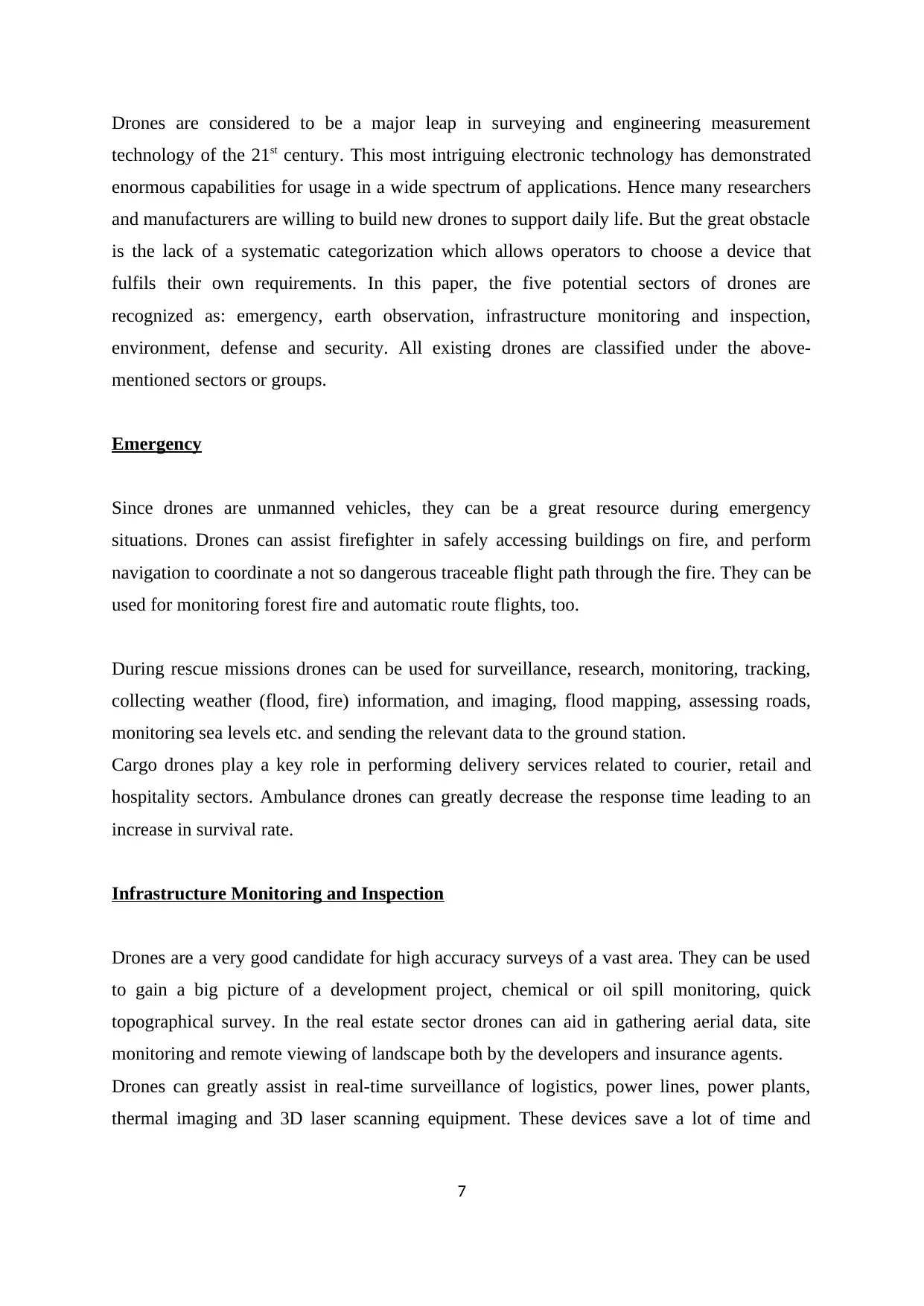
Drones are considered to be a major leap in surveying and engineering measurement
technology of the 21st century. This most intriguing electronic technology has demonstrated
enormous capabilities for usage in a wide spectrum of applications. Hence many researchers
and manufacturers are willing to build new drones to support daily life. But the great obstacle
is the lack of a systematic categorization which allows operators to choose a device that
fulfils their own requirements. In this paper, the five potential sectors of drones are
recognized as: emergency, earth observation, infrastructure monitoring and inspection,
environment, defense and security. All existing drones are classified under the above-
mentioned sectors or groups.
Emergency
Since drones are unmanned vehicles, they can be a great resource during emergency
situations. Drones can assist firefighter in safely accessing buildings on fire, and perform
navigation to coordinate a not so dangerous traceable flight path through the fire. They can be
used for monitoring forest fire and automatic route flights, too.
During rescue missions drones can be used for surveillance, research, monitoring, tracking,
collecting weather (flood, fire) information, and imaging, flood mapping, assessing roads,
monitoring sea levels etc. and sending the relevant data to the ground station.
Cargo drones play a key role in performing delivery services related to courier, retail and
hospitality sectors. Ambulance drones can greatly decrease the response time leading to an
increase in survival rate.
Infrastructure Monitoring and Inspection
Drones are a very good candidate for high accuracy surveys of a vast area. They can be used
to gain a big picture of a development project, chemical or oil spill monitoring, quick
topographical survey. In the real estate sector drones can aid in gathering aerial data, site
monitoring and remote viewing of landscape both by the developers and insurance agents.
Drones can greatly assist in real-time surveillance of logistics, power lines, power plants,
thermal imaging and 3D laser scanning equipment. These devices save a lot of time and
7
technology of the 21st century. This most intriguing electronic technology has demonstrated
enormous capabilities for usage in a wide spectrum of applications. Hence many researchers
and manufacturers are willing to build new drones to support daily life. But the great obstacle
is the lack of a systematic categorization which allows operators to choose a device that
fulfils their own requirements. In this paper, the five potential sectors of drones are
recognized as: emergency, earth observation, infrastructure monitoring and inspection,
environment, defense and security. All existing drones are classified under the above-
mentioned sectors or groups.
Emergency
Since drones are unmanned vehicles, they can be a great resource during emergency
situations. Drones can assist firefighter in safely accessing buildings on fire, and perform
navigation to coordinate a not so dangerous traceable flight path through the fire. They can be
used for monitoring forest fire and automatic route flights, too.
During rescue missions drones can be used for surveillance, research, monitoring, tracking,
collecting weather (flood, fire) information, and imaging, flood mapping, assessing roads,
monitoring sea levels etc. and sending the relevant data to the ground station.
Cargo drones play a key role in performing delivery services related to courier, retail and
hospitality sectors. Ambulance drones can greatly decrease the response time leading to an
increase in survival rate.
Infrastructure Monitoring and Inspection
Drones are a very good candidate for high accuracy surveys of a vast area. They can be used
to gain a big picture of a development project, chemical or oil spill monitoring, quick
topographical survey. In the real estate sector drones can aid in gathering aerial data, site
monitoring and remote viewing of landscape both by the developers and insurance agents.
Drones can greatly assist in real-time surveillance of logistics, power lines, power plants,
thermal imaging and 3D laser scanning equipment. These devices save a lot of time and
7
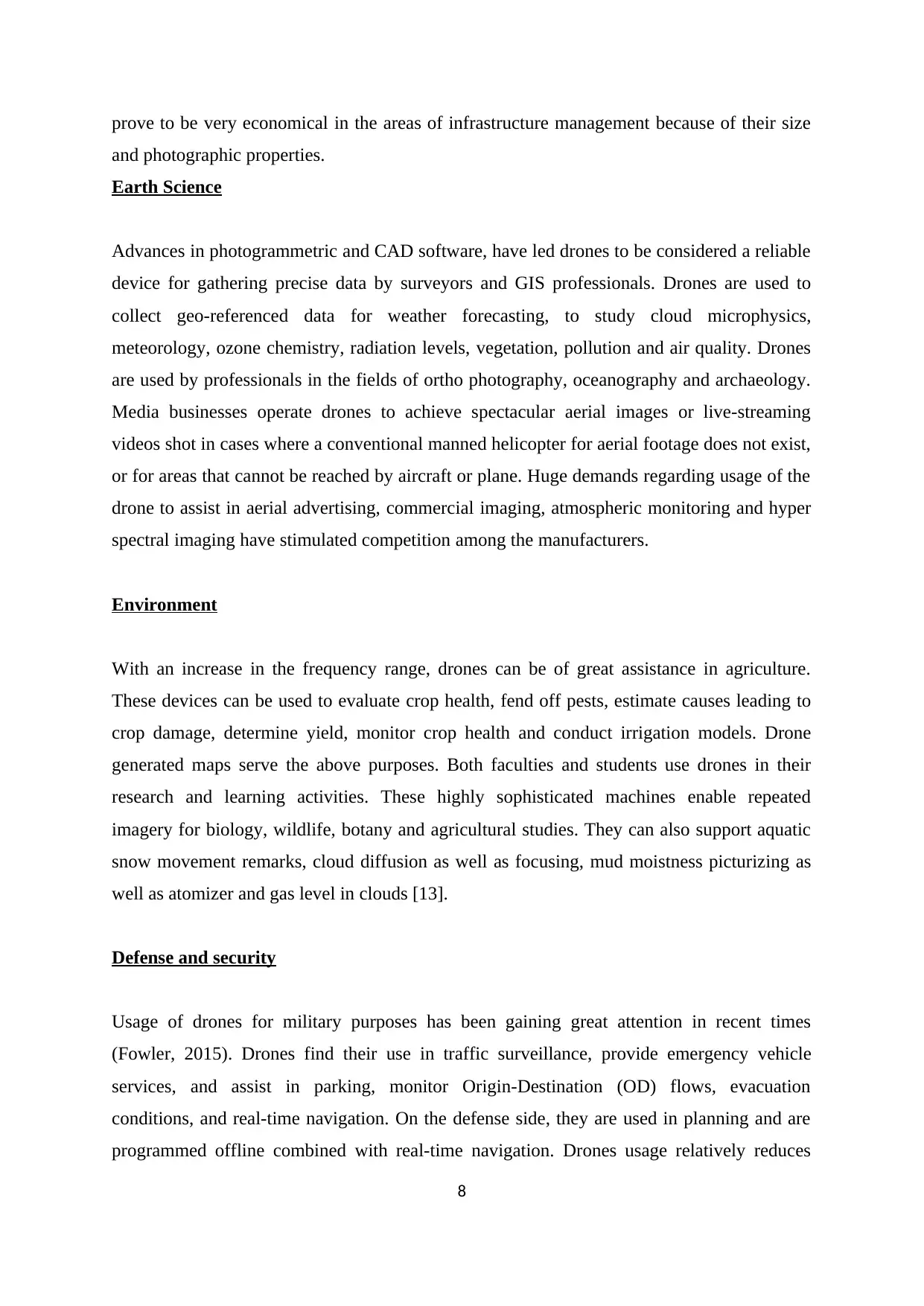
prove to be very economical in the areas of infrastructure management because of their size
and photographic properties.
Earth Science
Advances in photogrammetric and CAD software, have led drones to be considered a reliable
device for gathering precise data by surveyors and GIS professionals. Drones are used to
collect geo-referenced data for weather forecasting, to study cloud microphysics,
meteorology, ozone chemistry, radiation levels, vegetation, pollution and air quality. Drones
are used by professionals in the fields of ortho photography, oceanography and archaeology.
Media businesses operate drones to achieve spectacular aerial images or live-streaming
videos shot in cases where a conventional manned helicopter for aerial footage does not exist,
or for areas that cannot be reached by aircraft or plane. Huge demands regarding usage of the
drone to assist in aerial advertising, commercial imaging, atmospheric monitoring and hyper
spectral imaging have stimulated competition among the manufacturers.
Environment
With an increase in the frequency range, drones can be of great assistance in agriculture.
These devices can be used to evaluate crop health, fend off pests, estimate causes leading to
crop damage, determine yield, monitor crop health and conduct irrigation models. Drone
generated maps serve the above purposes. Both faculties and students use drones in their
research and learning activities. These highly sophisticated machines enable repeated
imagery for biology, wildlife, botany and agricultural studies. They can also support aquatic
snow movement remarks, cloud diffusion as well as focusing, mud moistness picturizing as
well as atomizer and gas level in clouds [13].
Defense and security
Usage of drones for military purposes has been gaining great attention in recent times
(Fowler, 2015). Drones find their use in traffic surveillance, provide emergency vehicle
services, and assist in parking, monitor Origin-Destination (OD) flows, evacuation
conditions, and real-time navigation. On the defense side, they are used in planning and are
programmed offline combined with real-time navigation. Drones usage relatively reduces
8
and photographic properties.
Earth Science
Advances in photogrammetric and CAD software, have led drones to be considered a reliable
device for gathering precise data by surveyors and GIS professionals. Drones are used to
collect geo-referenced data for weather forecasting, to study cloud microphysics,
meteorology, ozone chemistry, radiation levels, vegetation, pollution and air quality. Drones
are used by professionals in the fields of ortho photography, oceanography and archaeology.
Media businesses operate drones to achieve spectacular aerial images or live-streaming
videos shot in cases where a conventional manned helicopter for aerial footage does not exist,
or for areas that cannot be reached by aircraft or plane. Huge demands regarding usage of the
drone to assist in aerial advertising, commercial imaging, atmospheric monitoring and hyper
spectral imaging have stimulated competition among the manufacturers.
Environment
With an increase in the frequency range, drones can be of great assistance in agriculture.
These devices can be used to evaluate crop health, fend off pests, estimate causes leading to
crop damage, determine yield, monitor crop health and conduct irrigation models. Drone
generated maps serve the above purposes. Both faculties and students use drones in their
research and learning activities. These highly sophisticated machines enable repeated
imagery for biology, wildlife, botany and agricultural studies. They can also support aquatic
snow movement remarks, cloud diffusion as well as focusing, mud moistness picturizing as
well as atomizer and gas level in clouds [13].
Defense and security
Usage of drones for military purposes has been gaining great attention in recent times
(Fowler, 2015). Drones find their use in traffic surveillance, provide emergency vehicle
services, and assist in parking, monitor Origin-Destination (OD) flows, evacuation
conditions, and real-time navigation. On the defense side, they are used in planning and are
programmed offline combined with real-time navigation. Drones usage relatively reduces
8
⊘ This is a preview!⊘
Do you want full access?
Subscribe today to unlock all pages.

Trusted by 1+ million students worldwide
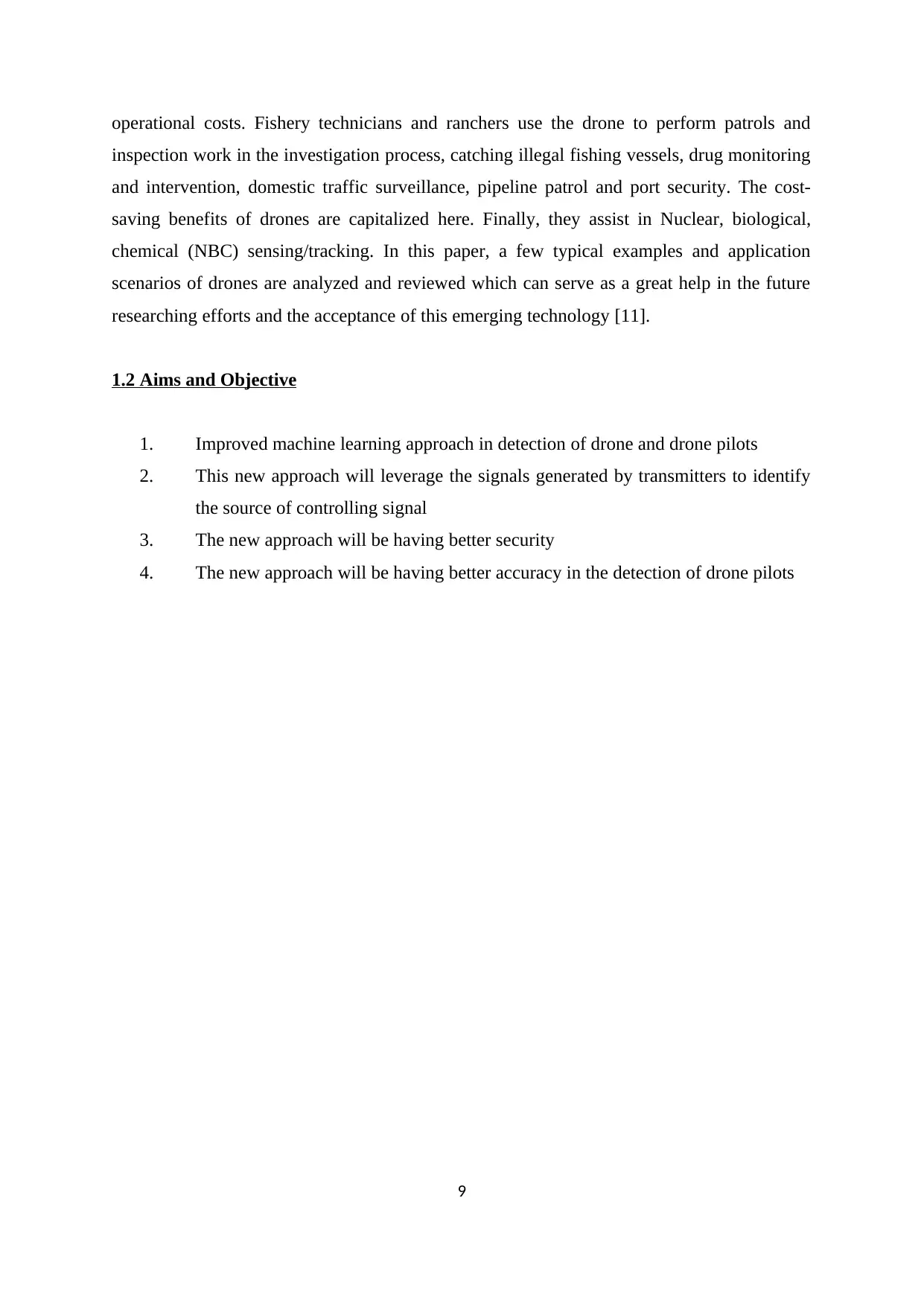
operational costs. Fishery technicians and ranchers use the drone to perform patrols and
inspection work in the investigation process, catching illegal fishing vessels, drug monitoring
and intervention, domestic traffic surveillance, pipeline patrol and port security. The cost-
saving benefits of drones are capitalized here. Finally, they assist in Nuclear, biological,
chemical (NBC) sensing/tracking. In this paper, a few typical examples and application
scenarios of drones are analyzed and reviewed which can serve as a great help in the future
researching efforts and the acceptance of this emerging technology [11].
1.2 Aims and Objective
1. Improved machine learning approach in detection of drone and drone pilots
2. This new approach will leverage the signals generated by transmitters to identify
the source of controlling signal
3. The new approach will be having better security
4. The new approach will be having better accuracy in the detection of drone pilots
9
inspection work in the investigation process, catching illegal fishing vessels, drug monitoring
and intervention, domestic traffic surveillance, pipeline patrol and port security. The cost-
saving benefits of drones are capitalized here. Finally, they assist in Nuclear, biological,
chemical (NBC) sensing/tracking. In this paper, a few typical examples and application
scenarios of drones are analyzed and reviewed which can serve as a great help in the future
researching efforts and the acceptance of this emerging technology [11].
1.2 Aims and Objective
1. Improved machine learning approach in detection of drone and drone pilots
2. This new approach will leverage the signals generated by transmitters to identify
the source of controlling signal
3. The new approach will be having better security
4. The new approach will be having better accuracy in the detection of drone pilots
9
Paraphrase This Document
Need a fresh take? Get an instant paraphrase of this document with our AI Paraphraser
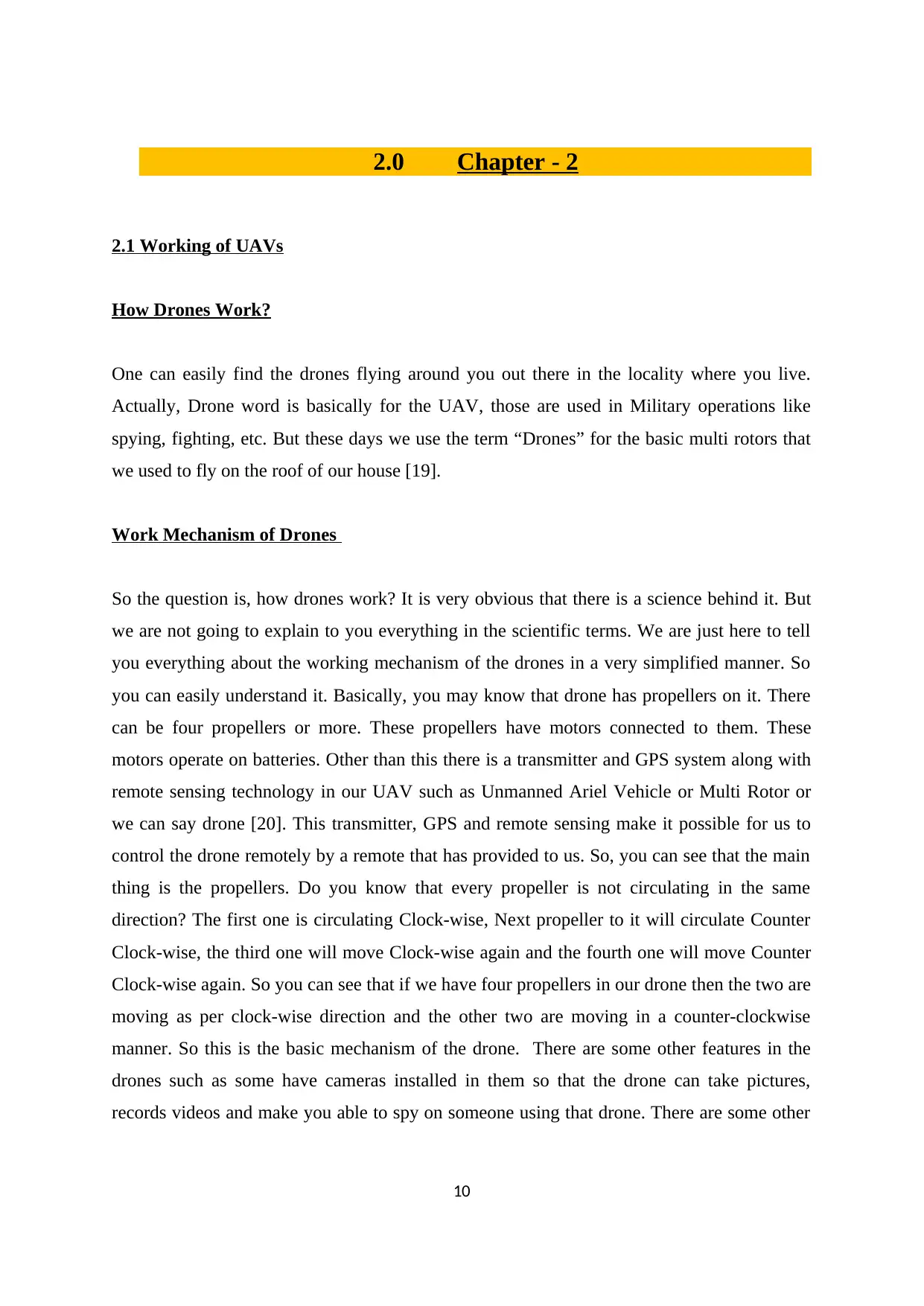
2.0 Chapter - 2
2.1 Working of UAVs
How Drones Work?
One can easily find the drones flying around you out there in the locality where you live.
Actually, Drone word is basically for the UAV, those are used in Military operations like
spying, fighting, etc. But these days we use the term “Drones” for the basic multi rotors that
we used to fly on the roof of our house [19].
Work Mechanism of Drones
So the question is, how drones work? It is very obvious that there is a science behind it. But
we are not going to explain to you everything in the scientific terms. We are just here to tell
you everything about the working mechanism of the drones in a very simplified manner. So
you can easily understand it. Basically, you may know that drone has propellers on it. There
can be four propellers or more. These propellers have motors connected to them. These
motors operate on batteries. Other than this there is a transmitter and GPS system along with
remote sensing technology in our UAV such as Unmanned Ariel Vehicle or Multi Rotor or
we can say drone [20]. This transmitter, GPS and remote sensing make it possible for us to
control the drone remotely by a remote that has provided to us. So, you can see that the main
thing is the propellers. Do you know that every propeller is not circulating in the same
direction? The first one is circulating Clock-wise, Next propeller to it will circulate Counter
Clock-wise, the third one will move Clock-wise again and the fourth one will move Counter
Clock-wise again. So you can see that if we have four propellers in our drone then the two are
moving as per clock-wise direction and the other two are moving in a counter-clockwise
manner. So this is the basic mechanism of the drone. There are some other features in the
drones such as some have cameras installed in them so that the drone can take pictures,
records videos and make you able to spy on someone using that drone. There are some other
10
2.1 Working of UAVs
How Drones Work?
One can easily find the drones flying around you out there in the locality where you live.
Actually, Drone word is basically for the UAV, those are used in Military operations like
spying, fighting, etc. But these days we use the term “Drones” for the basic multi rotors that
we used to fly on the roof of our house [19].
Work Mechanism of Drones
So the question is, how drones work? It is very obvious that there is a science behind it. But
we are not going to explain to you everything in the scientific terms. We are just here to tell
you everything about the working mechanism of the drones in a very simplified manner. So
you can easily understand it. Basically, you may know that drone has propellers on it. There
can be four propellers or more. These propellers have motors connected to them. These
motors operate on batteries. Other than this there is a transmitter and GPS system along with
remote sensing technology in our UAV such as Unmanned Ariel Vehicle or Multi Rotor or
we can say drone [20]. This transmitter, GPS and remote sensing make it possible for us to
control the drone remotely by a remote that has provided to us. So, you can see that the main
thing is the propellers. Do you know that every propeller is not circulating in the same
direction? The first one is circulating Clock-wise, Next propeller to it will circulate Counter
Clock-wise, the third one will move Clock-wise again and the fourth one will move Counter
Clock-wise again. So you can see that if we have four propellers in our drone then the two are
moving as per clock-wise direction and the other two are moving in a counter-clockwise
manner. So this is the basic mechanism of the drone. There are some other features in the
drones such as some have cameras installed in them so that the drone can take pictures,
records videos and make you able to spy on someone using that drone. There are some other
10
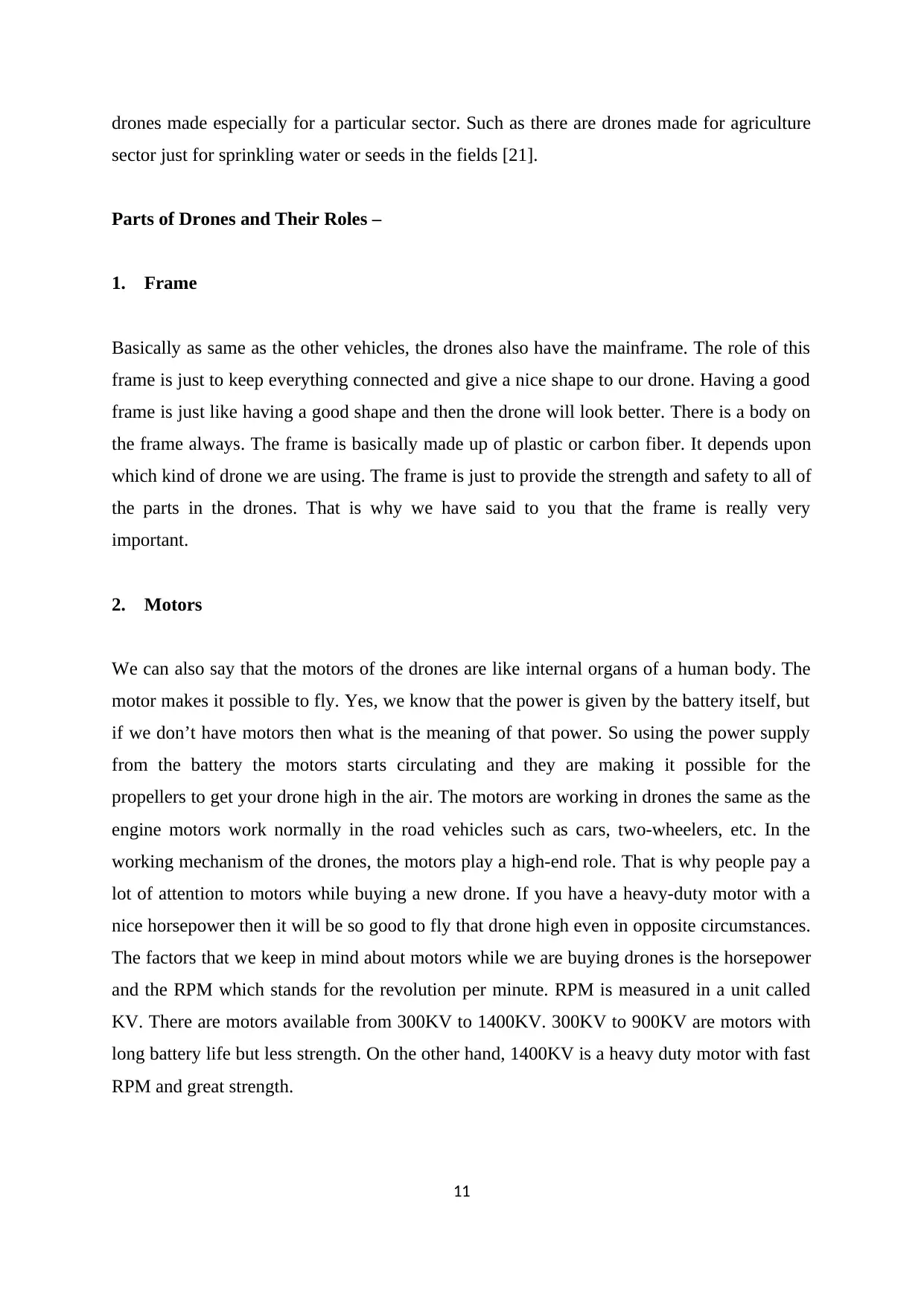
drones made especially for a particular sector. Such as there are drones made for agriculture
sector just for sprinkling water or seeds in the fields [21].
Parts of Drones and Their Roles –
1. Frame
Basically as same as the other vehicles, the drones also have the mainframe. The role of this
frame is just to keep everything connected and give a nice shape to our drone. Having a good
frame is just like having a good shape and then the drone will look better. There is a body on
the frame always. The frame is basically made up of plastic or carbon fiber. It depends upon
which kind of drone we are using. The frame is just to provide the strength and safety to all of
the parts in the drones. That is why we have said to you that the frame is really very
important.
2. Motors
We can also say that the motors of the drones are like internal organs of a human body. The
motor makes it possible to fly. Yes, we know that the power is given by the battery itself, but
if we don’t have motors then what is the meaning of that power. So using the power supply
from the battery the motors starts circulating and they are making it possible for the
propellers to get your drone high in the air. The motors are working in drones the same as the
engine motors work normally in the road vehicles such as cars, two-wheelers, etc. In the
working mechanism of the drones, the motors play a high-end role. That is why people pay a
lot of attention to motors while buying a new drone. If you have a heavy-duty motor with a
nice horsepower then it will be so good to fly that drone high even in opposite circumstances.
The factors that we keep in mind about motors while we are buying drones is the horsepower
and the RPM which stands for the revolution per minute. RPM is measured in a unit called
KV. There are motors available from 300KV to 1400KV. 300KV to 900KV are motors with
long battery life but less strength. On the other hand, 1400KV is a heavy duty motor with fast
RPM and great strength.
11
sector just for sprinkling water or seeds in the fields [21].
Parts of Drones and Their Roles –
1. Frame
Basically as same as the other vehicles, the drones also have the mainframe. The role of this
frame is just to keep everything connected and give a nice shape to our drone. Having a good
frame is just like having a good shape and then the drone will look better. There is a body on
the frame always. The frame is basically made up of plastic or carbon fiber. It depends upon
which kind of drone we are using. The frame is just to provide the strength and safety to all of
the parts in the drones. That is why we have said to you that the frame is really very
important.
2. Motors
We can also say that the motors of the drones are like internal organs of a human body. The
motor makes it possible to fly. Yes, we know that the power is given by the battery itself, but
if we don’t have motors then what is the meaning of that power. So using the power supply
from the battery the motors starts circulating and they are making it possible for the
propellers to get your drone high in the air. The motors are working in drones the same as the
engine motors work normally in the road vehicles such as cars, two-wheelers, etc. In the
working mechanism of the drones, the motors play a high-end role. That is why people pay a
lot of attention to motors while buying a new drone. If you have a heavy-duty motor with a
nice horsepower then it will be so good to fly that drone high even in opposite circumstances.
The factors that we keep in mind about motors while we are buying drones is the horsepower
and the RPM which stands for the revolution per minute. RPM is measured in a unit called
KV. There are motors available from 300KV to 1400KV. 300KV to 900KV are motors with
long battery life but less strength. On the other hand, 1400KV is a heavy duty motor with fast
RPM and great strength.
11
⊘ This is a preview!⊘
Do you want full access?
Subscribe today to unlock all pages.

Trusted by 1+ million students worldwide
1 out of 184
Your All-in-One AI-Powered Toolkit for Academic Success.
+13062052269
info@desklib.com
Available 24*7 on WhatsApp / Email
![[object Object]](/_next/static/media/star-bottom.7253800d.svg)
Unlock your academic potential
Copyright © 2020–2025 A2Z Services. All Rights Reserved. Developed and managed by ZUCOL.